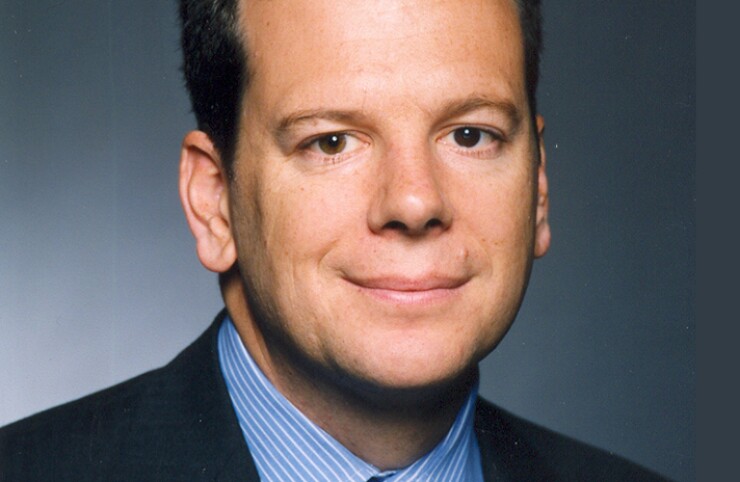The employment report did not settle the 25 or 50 basis point rate cut argument, economists said, as it offered a mixed bag, with lower-than-expected jobs added and downward revisions to previous months’ numbers, while earnings grew and the unemployment rate dipped.
Nonfarm payrolls rose 142,000 in August, less than the 165,000 expected, while the unemployment rate slipped to 4.2% from 4.3% a month earlier, average hourly earnings rose 0.4% after a 0.1% decrease in July, leaving wages up 3.8% year-over-year, compared to the 3.6% in July.
Federal Reserve Gov. Christopher Waller, in a speech to be delivered at Notre Dame University after the report, said the Fed needs to cut rates at
Federal Reserve Bank of New York President John Williams, in text of a speech before the Council on Foreign Relations, agreed the time is right to cut rates, but wouldn’t commit on magnitude.
“Markets reacted with volatility,” noted Mark Malek, CIO at Siebert, with premarket equity indexes were down, but off their lows.
The report, he said, “represents a negative economic development and is likely to further clear the path for a potentially larger Fed rate cut later this month.”
After the release, fed funds futures were slightly favoring a half-point rate cut this month.
“Payrolls at 142k and unemployment at 4.2% leave the market yearning for more confirmation that the soft-landing narrative is intact,” said Adam Hetts, global head of multi-asset and portfolio manager at Janus Henderson Investors.
While the labor market is slowing, he said, the numbers do not “scream 50bps in September cuts.”
The labor market has cooled rapidly over the last three months and the time has come for the Fed to adjust its restrictive policy, but labor market conditions are not yet cratering,” said
Federal Open Market Committee members will welcome the dip in the unemployment rate, he said, and “the welcome surge in earnings should help boost real consumer spending power at a time when personal savings need to be rebuilt.”
Still, it did not “settle the 25 versus 50 basis point rate cut debate on Wall Street or on the FOMC.” Despite labor market cooling, there’s “no reason to panic,” Anderson said, and a 25-basis point rate cut this month is his base case.
“Treasury bond yields are trying to stabilize after the knee-jerk reaction lower on the release,” he noted.
“An especially strong or weak employment report could have crystallized the 25 or 50 bps rate cut debate for the FOMC’s upcoming meeting,” noted Wells Fargo Securities senior economists Sarah House and Michael Pugliese. “Instead, today’s data have offered something for both the hawks and the doves on the FOMC.”
While the “report is plenty weak enough to justify a rate cut in two weeks,” Chris Low, chief economist at FHN Financial, said, “we are skeptical it justifies 50bp. … The numbers are weak, but not cusp of recession weak.”
“The degree to which things are slowing remains in question, however, as average weekly hours and average hourly earnings both ticked higher in a positive sign,” said Josh Jamner, investment strategy analyst at ClearBridge Investments.
“The labor market is perhaps best characterized as cooling but still healthy, with cooling being the key determinant to rate cuts given [Fed Chair Jerome]
“Unfortunately, today’s jobs report doesn’t entirely resolve the recession debate,” said Seema Shah, chief global strategist at Principal Asset Management. “Significant negative revisions to July’s already weak number, coupled with a softer-than-expected August number, offset the good news from the fall in the unemployment rate and rise in hours worked.”
Shah continued, “For the Fed, the decision comes down to deciding which is the bigger risk: reigniting inflation pressures if they cut by 50bps or threatening recession if they only cut by 25bps. On balance, with inflation pressures subdued, there is no reason for the Fed not to err on the side of caution and frontload rate cuts.”
This is another sign of labor market deceleration, said Lindsay Rosner, head of multi-sector investing within Goldman Sachs Asset Management. “That is real.”
While it wasn’t definitive enough for determining the magnitude of the cut, Rosner said, “What is clear is the Fed is cutting and upcoming Fed speak will help shed some light on the internal debate around the September meeting.”
With the slowing in the labor market, Wells Fargo Investment Institute Senior Global Market Strategist Scott Wren said, “we continue to look for the unemployment rate to rise to 4.4% by the end of this year.”
While the Fed wanted some weakness, “the data is now testing Chair Powell’s stated limits,” he said. “Financial markets have turned attention their attention toward how much the Fed will ease and how fast the economy is slowing.”
Volatility will continue in the near-term, Wren said.
He expects a 25-basis-point cut at the September FOMC meeting and another 75 bps before yearend. “The consensus has eight-plus cuts priced in through yearend 2025 and that looks too aggressive to us. Do not get hung up on whether the Sept cut will be 25 or 50 bps. The important thing is the Fed is beginning a series of rate cuts.”
Wall Street “desperately wants a rate cut in September,” noted University of Central Florida economist Sean Snaith, but he believes the Fed should wait until next year
“There’s so much weight being put on this report, but the totality of it isn’t setting off alarms that the Fed needs to start cutting,” he said “They should continue to wait and see the progress on inflation.”
